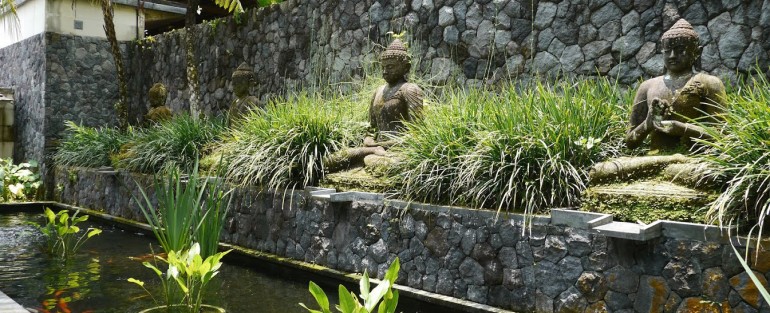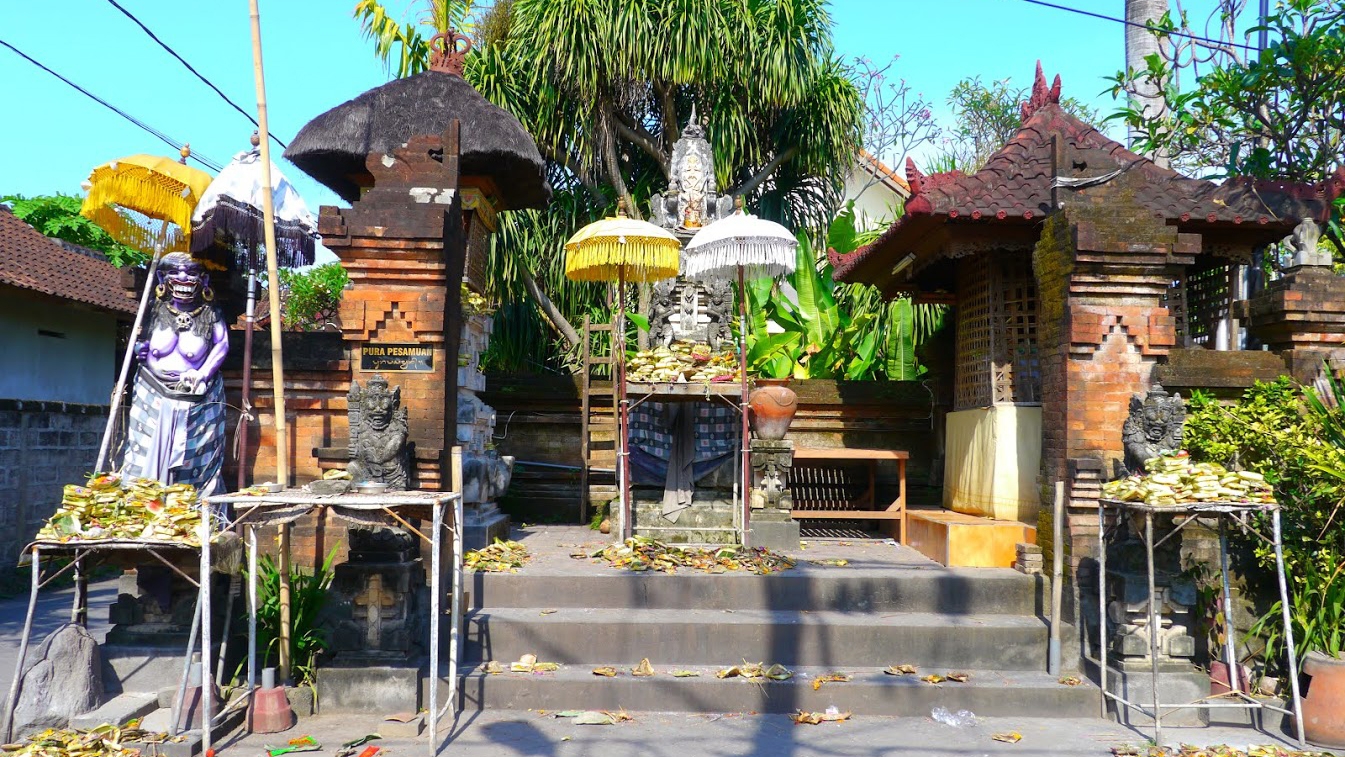
Need to Know – The Culture of Bali
Bali is different from practically everywhere else you will visit in Southeast Asia, and, indeed, the world. In order to understand and show your respect for the culture, plus minimize any breaches of etiquette, here’s an overview from our contributing editor, Johanna Read.
Bali’s religion is Hindu — in a form unique to Bali — while the rest of Indonesia is Muslim. Balinese Hinduism incorporates animism, the worship of ancestors, as well as some Buddhist elements. Thailand, Cambodia, and Laos are Buddhist countries, while Malaysia is a mix of Islam, Buddhism, Indian Hinduism and Christianity.
Modesty and courtesy — the flavour of Southeast Asia

There are many elements of Balinese culture that are similar to other Southeast Asian countries, regardless of religion. Modesty and courtesy are very much appreciated: remove your shoes before entering houses and specific areas of temples, avoid using your left hand, no public displays of affection, dress to cover shoulders and knees, and everything in between. (More info about travelling respectfully in SouthEast Asia is at www.traveleater.net/how-to-travel-respectfully-in-a-buddhist-country)
Bali has a few differences from the rest of the region of which you should be aware, both to avoid giving offence and to increase your understanding of the unique culture you’re visiting.
Temples

Bali is known as the island of a thousand temples, but in reality has about 20,000. They will be one of the first things you notice about Bali.
Temples are associated with identity — family, profession, village, as well as public — and people worship only in those temples associated with their identity. Each village will have at least three, one for Brahma (the creator of the world), one for Vishnu (who maintains the world), and one for Siwa (the destroyer). To illustrate the importance of religion in Balinese life: most families will construct their home shrines before they invest the time and money to build a kitchen or living quarters; only a place to sleep is made first.
To enter a Balinese temple, you’ll be asked to don a sarong and sash (they’ll be provided, sometimes for a small donation, and you’ll have help to tie it properly). Please, no jokes about men in skirts! Anyone who is bleeding (either from an open wound or menstruating women) are considered impure and not permitted in the temple.
Once inside, be quiet and discrete (unobtrusive photos are ok as long as you don’t use a flash), be careful not to walk in front of anyone praying, and keep your head lower than that of the priest. Sit back and enjoy a glimpse into something you won’t see anywhere else.
Saput poleng — the black and the white

Throughout Bali you’ll see many religious statues wrapped in a black and white checked cloth. Saput poleng, meaning cloth with the opposite colour, is everywhere — on parasols, banners and flags, and Balinese men will wear a black and white sarong on certain occasions.
Seeking harmony is what drives Balinese life, and the black and white reflects this understanding of balance. Simply put, it reflects opposites like yin and yang, right and wrong, sadness and happiness, rich and poor, or up and down. But it also reflects that there are shades of grey. Can one know happiness without having experienced sorrow? Can anything be all good or all evil?
You will see trees wrapped in saput poleng too. Some are simply done up for decoration, but sometimes the wrappings mark where spirits reside. Many Balinese people will pay their respects to the tree spirit in some way when they pass by a tree like this. They might say a prayer or dim their car’s headlights, and some may seek another route to avoid bad luck.
Canang sari — offerings are everywhere

After a short walk in Bali, you will quickly notice small baskets of flowers and incense sticks on the ground and on temples and statues. You might think they are litter on the sidewalk before you see your first fresh one.
Called canang sari, these are daily offerings to thank Sang Hyang Widhi Wasa (the “all-in-one god”) and express gratitude for the richness of life. The contents are precisely made, with each flower and the direction it is laid having a meaning. It is extremely bad form to step on them, so while your eyes are swivelling to absorb everything around you, remember to look down every few steps to avoid them.
Religious processions
There are many ceremony days in Balinese Hinduism, and most of these are marked with a procession. If you’re in Bali for a week you’re likely to see at least one, especially in and around Ubud. They’re beautiful: long lines of Balinese walking the streets in their best clothes, men carrying colourful banners and umbrellas, women carrying fruit and flower offerings, usually atop their heads. Later that day there will be a party of sorts, and you might even be invited to join.
You can take photographs of the procession — just don’t get too close, use your flash or break the line. If you’re stuck in traffic behind a slow moving procession, so be it. Be patient, don’t honk the horn or attempt to pass.
Basic interactions

The culture in Bali is very kind and polite (with the exception of some extremely persistent taxi touts and shop owners in the more touristed parts of the island; these should be dismissed with a firm “no, thank you” or just ignored).
Strangers may ask you what you consider to be personal questions like “where are you going?” or “where are you staying?”. Again with the exception of the taxi touts, they’re generally meant as a polite greeting, much like “how are you?” / “fine thanks, and you?”. A real answer is not expected. You can politely answer vaguely with “over there” or “I’m walking” and no one will think anything of it.
You might also be asked whether you’re married, how much money you make, or even more personal questions. There’s no need to answer anything you don’t want to (or even tell the truth), and it is easy to steer these conversations to the number of children you have, your profession or about Bali generally. Even better, ask the questions of your new Balinese friend.
However, don’t ask too many deep questions about Balinese names. First names, interchangeable for men and women, often reflect birth order and caste. The individual or their parents may change them years later to reflect a life event, perhaps the death of a sibling. Last names are given when a child is three months old and often reflect the quality the parents see or hope for in their child. This quality may, or may not, have been achieved, so best leave your questions vague and don’t press too much.
There are only a handful of names used in Bali, and they’re not pronounced how a western person would assume: Wayan (first born) is “why-on”, Made is “mah-day”, Ketut is “keh-toot”, for example. Though too polite to say so, Made would rather be asked for a reminder in the correct pronunciation rather than have you call him or her “maid”.
The language
Like in most countries, a handful of phrases in the local language go a long way to being welcomed. Here are a few to introduce you to Bali:
Selamat pagi = good morning
Selamat sore = good afternoon
Selamat malam = good evening / night
Boleh = may I? (Ask this before you take a photo, and then show the photo to the person and offer to email it to them; they’ll consider it rude to ask you to send it, and rude of you not to offer)
Terima kasih / sama-sama = thank you (suksma in Balinese)
Enak = delicious
Tidak = no
Sudah = (I) already have (that)
Tidak apa apa = ok, it’s ok, it doesn’t matter (sing kenken in Balinese)
As in most places in the world, a smile, patience and discretion will go a very long way in Bali.
Blog and pictures by Johanna Read

One Comment
Trackbacks for this post